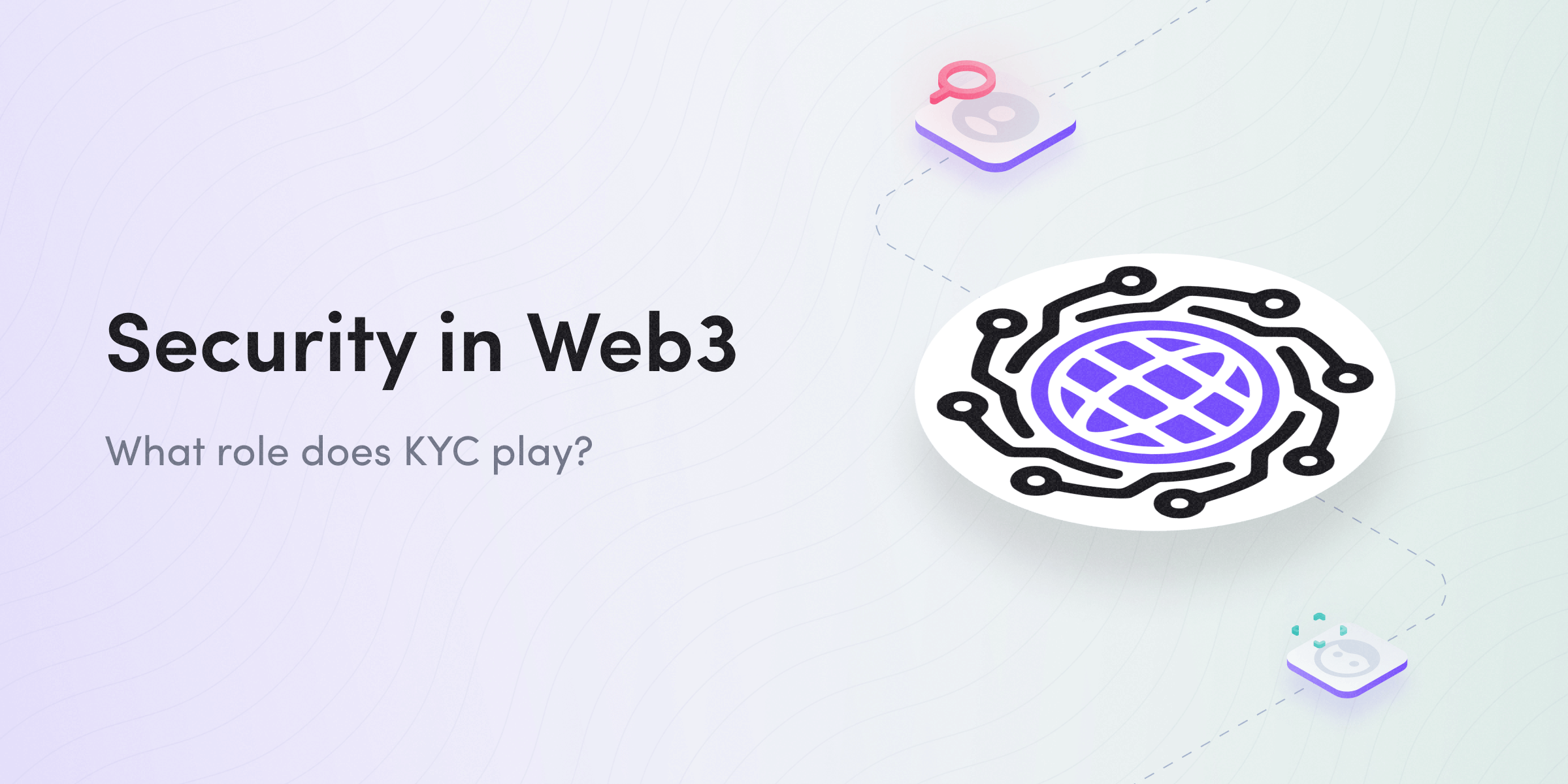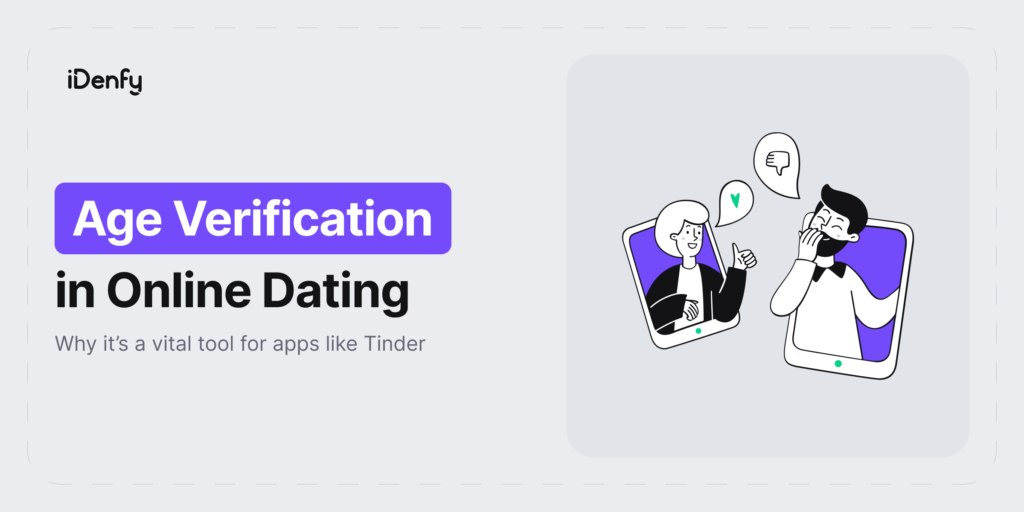Like Stewart Brand said, “Once a new technology rolls over you, if you’re not part of the steamroller, you’re part of the road.” While the use of this technology is still new, it has managed to catch some attention.
A report from Bankless Times shows that 46% of finance apps are based on web3 technology. Additionally, in the first half of 2022, web3 companies raised more than $1.8 billion.
There are internet users, both individuals and brands, who are slightly ignorant of how to manage things on web3. This unawareness can make them easy bait for scammers and their illicit activities.
To help overcome security challenges and answer all your web3 questions, we’ll focus on understanding this technology in a more detailed way. Here are the subtopics:
- The internet’s evolution throughout the years
- Current trends and web3 predictions
- Popular web3 use cases
- The various benefits of web3
- The importance of security and web3
- How KYC helps safeguard web3 businesses
Evolution of the Internet
Just like how computers have evolved from the big ENIACs and UNIVACs to what fits into our palms overnight, so also the internet. Let’s take a glance into what web3 and its predecessors are.
Web1.0
This is the first iteration of the internet, and it is referred to as the static internet. It uses the one-to-many approach where users can only consume information and give responses offline if need be.
The web pages are either filled with text or images, which are only enhanced using colors and are rigid to being read-only.
Timeline: This generation of internet lasted from 1991 to 2004.
Web 2.0
This is the game-changer of the internet. It switched from being read-only to an interactive and dynamic internet. The use of complex algorithms and the development of software as a service was introduced.
Web 2.0 is known best for the social media age. That meant the internet had given its consumers the power to become creators simply by using dedicated media apps.
Web 2.0 brought about the internet of things between devices and apps. It also encouraged active participation, emphasized attention, and introduced e-commerce, digital marketing, and other forms of online services that were not formerly possible on web 1.0.
Timeline: This generation started in 2005, and it is still in use.
Web 3.0
This is the newest iteration of the internet, gradually revolutionizing the internet and the way it is used. You can say that the dynamic internet (web 2.0) faces data vulnerabilities and middlemen challenges. Hackers can use tricky means to get unauthorized access and do illegal activities.
The economy of data has been revolutionized with the use of the blockchain internet, which is known as either the semantic web or the read-write-own web. The users of this web are given power over their data, therefore, eliminating the need for centralization.
Timeline: Web 3.0 was introduced in 2014 but gained major recognition in 2021, remaining one of the most talked about topics today.
How Web3 Will Change the Internet
In the next few years, web 3.0 will likely redefine how we access and engage with the internet. Having that in mind, there’s definitely a need to know the technological tools that web 3.0 uses
1. Blockchain
The blockchain is the core tool that engineers the web3 concept. Services built on the blockchain automatically enjoy beneficial features like security, decentralization, immutability, transparency, trustless permission, proof-of-authenticity, and ownership records. All these things are incorporated into the next level of the internet.
2. Decentralization
The iconic heroes of web 2.0 are tech giants that serve as custodians of users’ data and also go-betweens that are responsible for decisions. Web 3.0 runs on a DLT-distributed ledger technology, which eliminates centralization. Data and decision power go back to the users.
3. Tokens
Recent predictions show that tokens will be the virtual assets of the semantic web. They will include non-fungible tokens, soul-bound tokens, cryptocurrencies, etc. There’s no doubt that they will be at the center of discussion when analyzing the web3 economy.
4. Artificial Intelligence
The blockchain uses smart contracts to cut off human control in its operation. That’s why the use of artificial intelligence in collaboration with this smart contract will lead to more effective decision programming
5. ARs, VRs, and XRs
Augmented reality, virtual reality, and mixed reality are already the go-to tech tools that will continue to define how humans engage with each other in the metaverse.
How Brands are Using Web 3.0
Since Gavin Wood coined the word in 2014, brands have been using the technology web 3.0 provides to build products and reinvent digital services. We discuss some of the main use cases below:
Decentralized Finance (DeFi)
The most popular service built on the blockchain is the ability to transact without a centralized financial institution. DeFi is a blockchain concept that uses the peer-to-peer mode of transactions. It’s a system whereby users can enjoy all financial services without regard for legal tender. Defi uses crypto tokens, decentralized exchanges, smart contracts, and decentralized protocols to achieve its aim.
Decentralized Applications (Dapps)
Decentralized applications are digital applications built on the blockchain to perform specific tasks. Dapps are the bridge between services in web3 and internet users. Decentralized applications are algorithms of smart contracts that are self-controlled. In today’s world, browsers, games, social networks, and productivity apps have been built as dapps.
Decentralized Autonomous Organizations (DAOs)
DAOs are the governing bodies in web3. The use of centralized authorities or management in web2 is replaced by a community decision approach in which individuals voice out through voting. Voting is done using the governance token to support or against a proposed change in the organization.
The Main Web3 Benefits
- Openness: On the blockchain web, records are on-chain. They can be verified by anyone from anywhere. The use of distributed ledger technology and the consensus mechanism has helped to modify how data can be audited.
- Increased security: Web3 is a highly secured system compared to its predecessors. At the core, hacking a blockchain is hard and expensive, but blockchain protocols or services that are not conscious of their security threats can get exploited by hackers.
- Ownership of data: The decentralization feature of the blockchain automatically restores the control of data usage to the users.
- Seamless interaction and availability: Blockchain web3 deals directly with individuals, thereby eliminating web2 access restrictions such as age, country, social status, etc. Web3 ethos offers freedom of expression and access to everyone on the internet.
How to Stay Safe in Web3
We are still at the infant stage of web3, and while a lot are still unaware of the full potential that this technology might bring, many businesses have entered into the ditch of illicit activities.
Do Quality Research
Blockchain is the core of web3, and there are various types of blockchain. Quality research on the capability of the blockchain is needed to build an effective brand on the blockchain. Blockchains are built differently and operate differently. They strike a balance between the benefits and shortcomings as well as understand the consensus and the design.
Conduct Smart Contract Tests
Smart contracts are essential to building products and services on the blockchain, and most exploits are executed when vulnerabilities are noticed in codes. Before deployment, smart contracts are to go through different stages of security testing to assure brands and users of safety.
Use Attack Prevention Techniques
Attack prevention techniques can be a body of structured steps to analyze and test every stage of product development. At each stage, posing as a cyber attacker would help to know where the vulnerabilities of the system lie.
Be Conscious of the Web3 Culture
In web3, the culture is defined by how things are being done. Culture at the development phase might include understanding how each product blends with regional regulations. Web3 tokens are under surveillance by the government, to play safe, brands are to take a deep dive into regulations such as Know Your Customer (KYC), Anti-Money Laundering (AML), etc.
Why Web3 Brands Need KYC
In 2021, cryptocurrency scammers danced away with $14 billion, with most of the actions being executed in DeFi. The awful events of 2022, from the fall of Luna Terra to the fall of the FTX empire, have only killed investors’ stability, trust, and continuous adoption of what web3 products and services have to offer.
Scams in Web3
To gain back investors’ trust, a channel for credibility and safety needs to be built. KYC and AML regulations help web3 investors not get tricked into uncontrollable industry scams. Despite that, firstly, business owners and investors need to be aware of the scams they’re up against.
Wash Trading
Wash trading is simply when a trader or investor sells an asset to himself to mislead others with a high liquidity trap. Wash trading has been a long-time discussion in the crypto space. In 2019, Bitwise reported that 95% of the spot trading volume reported on Coinmarketcap is fake.
Additionally, in 2022, it was reported that 58% of NFT trades are actually wash trading. While this trade provides the fraudsters with massive profits, it is a loss on the side of investors that fall into this trap. Not to mention, it also diminishes the credibility of the platforms where the scams are carried out.
Fake Digital Assets
Digital assets or collectibles are beginning to be of constant use in our daily life. The likes of virtual clothing items, virtual products, lands, houses, etc., will take the larger part of the metaverse economy. Due to being an open internet, scammers or fraudsters can exploit this and swindle people of their money.
How does this work? In metaverse events, each user can walk around spaces and network with other unknown users, presenting themselves as businessmen, thereby luring them into fraudulent schemes.
How KYC Helps Secure Web3
Web3 users are pseudonymously represented on the blockchain, and fraudulent users have been investing in crypto assets to protect their criminal acts from the public eye.
That means these cryptos are being dispersed over decentralized protocols to hide their illicit activity further. This has made many Defi brands victims of fraudulent schemes.
So, for web3 products and services to shift to safe grounds, incorporation of what would increase credibility and protection of investor’s funds is needed.
A need for broader security testing
Even with smart contract testing, it is often insufficient to fully ensure the software’s reliability. For that, it is necessary to follow the web application security testing methodology. It is divided into three core aspects:
Black box testing. No prior information about the code is necessary. It primarily concerns the inputs and prepares a suite of expected outputs after specific inputs.
White box testing. Utilizes “unit” international tests and requires access to the code. Usually performed as part of a “test-driven development” strategy or by the Quality Assurance team
Gray box testing. Combines white and black box testing and focuses on code syntax, formatting, and general code structure cohesiveness.
This is where iDenfy comes into play.
We help web3 brands to enhance automated fraud prevention systems through our full-stack identity verification platform. But wait, there’s more. Our all-in-one solution includes KYB, AML Screening, Address Verification, and more!
Do you run a blockchain brand? Perfect, we’re sure you want a reliable ID verification service. Book a quick demo here.




